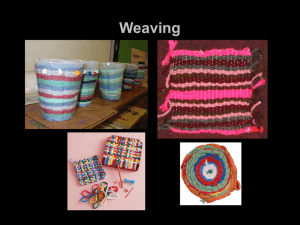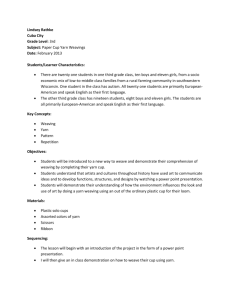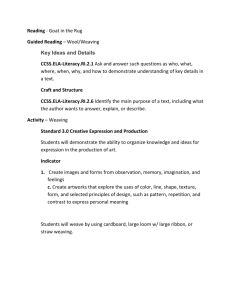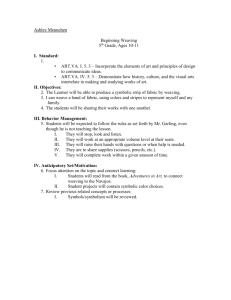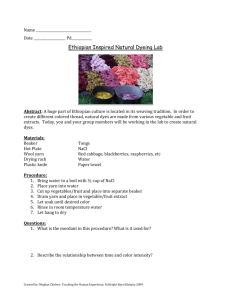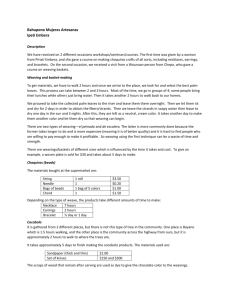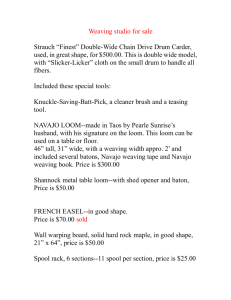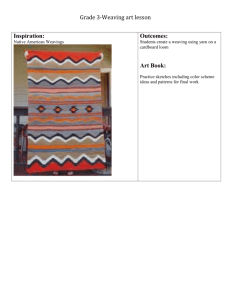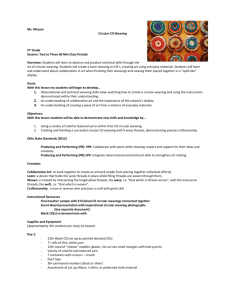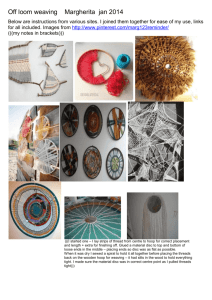Since I`m a certified (though not yet certifiable) art teacher, I feel
advertisement
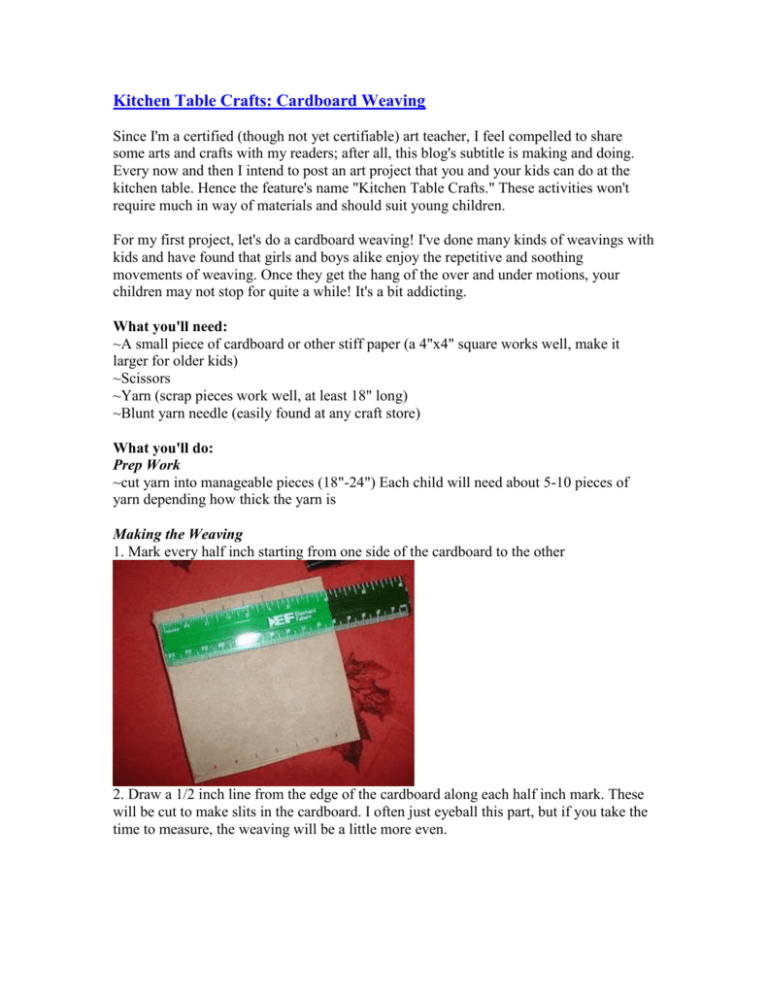
Kitchen Table Crafts: Cardboard Weaving Since I'm a certified (though not yet certifiable) art teacher, I feel compelled to share some arts and crafts with my readers; after all, this blog's subtitle is making and doing. Every now and then I intend to post an art project that you and your kids can do at the kitchen table. Hence the feature's name "Kitchen Table Crafts." These activities won't require much in way of materials and should suit young children. For my first project, let's do a cardboard weaving! I've done many kinds of weavings with kids and have found that girls and boys alike enjoy the repetitive and soothing movements of weaving. Once they get the hang of the over and under motions, your children may not stop for quite a while! It's a bit addicting. What you'll need: ~A small piece of cardboard or other stiff paper (a 4"x4" square works well, make it larger for older kids) ~Scissors ~Yarn (scrap pieces work well, at least 18" long) ~Blunt yarn needle (easily found at any craft store) What you'll do: Prep Work ~cut yarn into manageable pieces (18"-24") Each child will need about 5-10 pieces of yarn depending how thick the yarn is Making the Weaving 1. Mark every half inch starting from one side of the cardboard to the other 2. Draw a 1/2 inch line from the edge of the cardboard along each half inch mark. These will be cut to make slits in the cardboard. I often just eyeball this part, but if you take the time to measure, the weaving will be a little more even. 3. Cut along those lines to make the slits. 4. Tie a big knot on the end of a piece of your yarn. This will be what is called the warp, or the yarn that runs vertically on your weaving. (Ignore that needle below, it's not meant to be on that string. 5. Stick the knot in one of the first tabs on your cardboard "loom" 6. Now it's time to "warp" or "dress" your loom. Going up and down, back and forth, thread your yarn through each slit so it looks like this: You'll be hooking the yarn around each slit, and the back of your cardboard will look like this: Sorry for the glare, that old Silk soy milk box was glossy. After you've gotten all the slits, tie another knot at the end on the back. Cut off any excess yarn. 7. Time to weave! Take a new piece of yarn and thread it on your needle. Go over and under those vertical warp yarns, weaving back and forth. Each row will be the opposite of the row before it (if you went under one yarn, you'll go over it on the next row). You are now creating the "weft" of the weaving, the horizontal threads. 8. Eventually, the weaving will look like this. Not like this one below. That's what happens when you pull too tight. 9. When you finish one piece of yarn, tuck the end in behind the others and add another piece. Keep tucking the ends inside the back of the weaving. You can add other colors too! I wouldn't use such a flubby yarn as the green one (pretty, yes! Easy to weave with for kids, no). 10. Use a fork to pack down your weft yarn so that your weaving will be sturdy and tight. 11. When you're finished, it should look like this: 12. You can then remove it from the loom (if you're careful, you can reuse the cardboard loom). Weave in any stray ends on the back of the weaving. You can hang it up, use it as a drink coaster, or a rug for a dollhouse, or whatever you want! Another thing you can do some faux weaving on are those green plastic baskets that strawberries are often packaged in. Ribbons look nice woven between the slats. Who knows, maybe someday your kids will be weaving on one of these: My Osma Gallinger Floor loom, for weaving rugs, sadly not in use due to my 5 month old.
